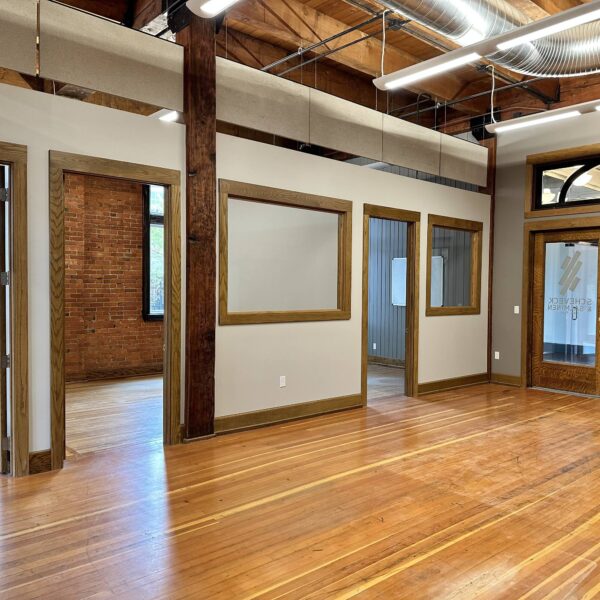Commercial real estate is a broad and diverse sector, teeming with opportunities for both seasoned investors and novices alike. This sector includes various property types, each with its unique characteristics, potentials, and challenges. From office buildings to retail spaces and industrial properties to multifamily housing, the landscape of commercial real estate is vast and varied. This guide aims to provide a comprehensive overview of the different types of commercial properties and the land opportunities they offer, helping you make informed investment decisions.
Exploring the Diverse World of Commercial Properties
Commercial properties are a critical component of the real estate market, encompassing a variety of property types, each serving different business purposes. This includes retail spaces, offices, warehouses, and industrial sites. Understanding the different types of commercial properties and their respective advantages and disadvantages is essential for investors looking to enter this market.
Understanding Real Estate Types: A Guide for Investors
Real estate is broadly categorized into residential, commercial, industrial, and land. Within commercial real estate, subtypes include shopping centers, office buildings, and multifamily rentals. Each type requires distinct investment and management strategies. For instance, the rental market for office spaces is vastly different from that of industrial properties. Therefore, it’s essential to have a clear understanding of these types and their respective markets before making any investment decisions.
1. Retail Properties: Where Commerce Meets Opportunity
Retail properties are commercial spaces used for retail activities such as shopping, eating, or entertainment. This type includes shopping malls, strip centers, standalone stores, and restaurants. Investing in retail properties can be lucrative as it offers a steady income stream through long-term leases. However, the success of these properties is highly dependent on location and market trends.
2. Office Buildings: Home to Corporate Giants
Office buildings are commercial spaces used for business operations such as management, administration, or professional services. This type includes skyscrapers, downtown buildings, and office parks. Investing in office properties can offer high returns but also comes with higher risks and management costs. The success of these properties is largely influenced by the local economy and job market.
3. Industrial Properties: The Backbone of Production
Industrial properties are commercial spaces used for manufacturing, production, or storage purposes. This type includes warehouses, distribution centers, and manufacturing plants. Investing in industrial properties can provide steady long-term income as they are often leased to established companies with strong financials. However, the maintenance and management of these properties require specialized knowledge and resources.
Land for Sale: Uncovering Potential in Untapped Spaces
Purchasing land offers unique opportunities for development or investment in commercial real estate. Land for sale might be earmarked for future commercial projects, such as shopping centers or office parks, offering a canvas for real estate development. When purchasing land, factors such as zoning laws, location, and market trends should be carefully considered to ensure a profitable investment.
The Appeal of Commercial Real Estate Investment
Investing in commercial properties often yields higher returns than residential real estate. It can offer investors long-term leases, the potential for capital appreciation, and the possibility of diversifying their investment portfolio. However, commercial real estate is not without its risks. Fluctuations in the economy and market trends can significantly impact the success of these properties. Therefore, thorough research and strategic decision-making are necessary for successful investments in this sector.
Evaluating Commercial Properties: Location, Zoning, and Potential
When considering commercial real estate investments, the location is paramount. Zoning laws dictate the type of business activities permitted, and the potential for foot traffic or accessibility can significantly impact profitability. Other factors to consider include the condition of the building, any potential renovation costs, and long-term market trends. A thorough evaluation of these elements can help investors make informed decisions and mitigate risks.
Commercial Land Development: Strategies for Success
Developing commercial land requires a strategic approach, including market analysis, understanding local regulations, and planning for infrastructure needs. It’s a complex process with the potential for significant financial rewards. However, it’s crucial to have a clear vision and understanding of the market demand before embarking on any development project.
Trends Influencing Commercial Real Estate and Land Acquisition
Current trends in commercial real estate, such as the rise of e-commerce and remote work, impact land value and the types of properties in demand. Keeping abreast of such trends is crucial for investors. For instance, the increasing popularity of online shopping has led to a rise in demand for industrial properties, such as warehouses and distribution centers. Understanding these trends can help investors identify potential opportunities for profitable investments.
Investing in Commercial Properties and Land for Long-term Growth
The commercial real estate market presents numerous opportunities for savvy investors. Whether through developing land or investing in existing commercial properties, there is potential for substantial economic growth and diversification. By understanding the different types of commercial properties, evaluating key factors, and staying updated on market trends, investors can make informed decisions and achieve long-term success in this lucrative sector. So, it’s essential for individuals interested in this market to continuously educate themselves and seek professional advice before making any investment decisions.








